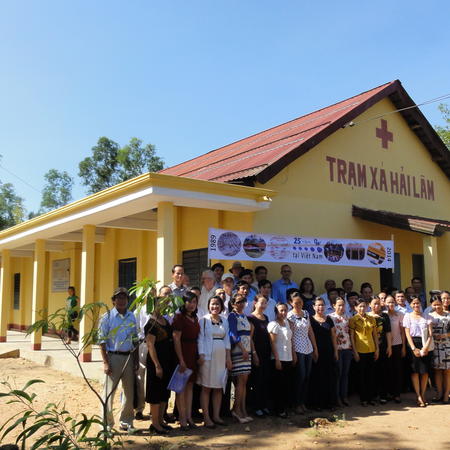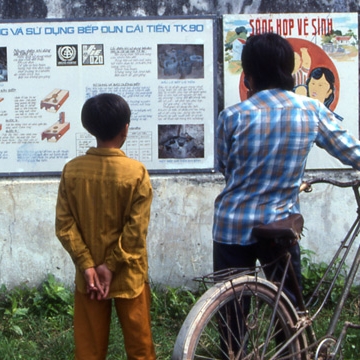- English
- Français
- Tiếng Việt
Floods
Flooding of otherwise normally or seasonally dry land can be considered a either benign or a damaging event, where floods are often perceived differently depending on one’s circumstances, life style, productive activity and place of living and working. In Bangladesh some farmers break dykes to allow silt bearing water to spread across and fertilise land, and the annual flooding of the Nile river basin ensured over thousands of years the fertility of the land and the availability of the main building material – sun dried earth bricks.
Where flooding is an expected and annual event, much can be done to mitigate against the effect of the flood, planning settlements away from flood prone areas and building structures that are above or will resist the impact of floods. In the Ayeyarwaddy delta in Burma/Myanmar, families build pig pens over the edge of the river, so that at high water the pigs are centimetres above the water. In Vietnam, pig pens in the central coastal plain Vietnam are built at ground level, and flood.
But during Cyclone Nargis in Myanmar in 2008 many of the people who died did so when their home collapsed under pressure from the storm surge and they had to leave it to find a safer refuge. Making the structure of houses resistant is an important measure when a family has little choice about where they live.
In the context of flash floods and flooding brought on by the exceptionally heavy rains typically occurring during tropical cyclones, DW works in both SE Asia and West Africa to mitigate against the risk of flood damage and the impact of flooding – whether the water rises slowly or arrives with a strong current. These actions include
- flood risk mapping at local level to plot which areas are safe for building home and refuges (Viet Nam);
- proposing strengthening principals to make existing and new houses safer against the impact of floods; (Myanmar, Viet Nam)
- building refuges where people can finds safety above flooding levels (Viet Nam, Myanmar).
Climate change in the traditionally dry regions of sahelian West Africa has been causing unprecedented floods in recent years with much damage to housing and agriculture. In Burkina Faso since 2006 (in Gorom Gorom) DW works to ensure that the same levels of damage do not occur in future floods. DW starts a new two year recovery programme for shelter in mid 2011 in Burkina Faso (LRRD – REPI 2010 project).











